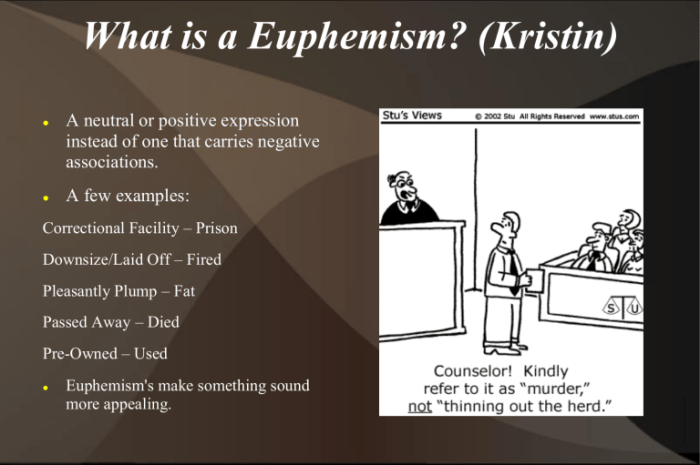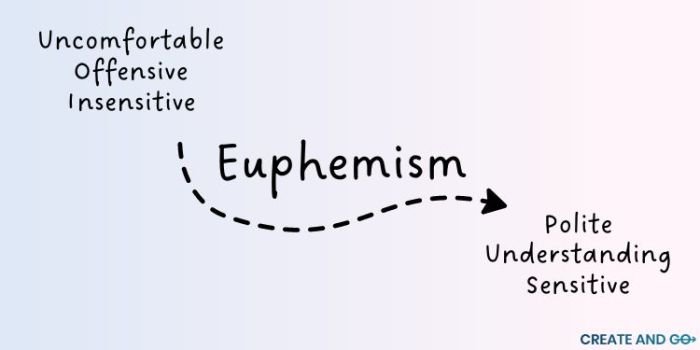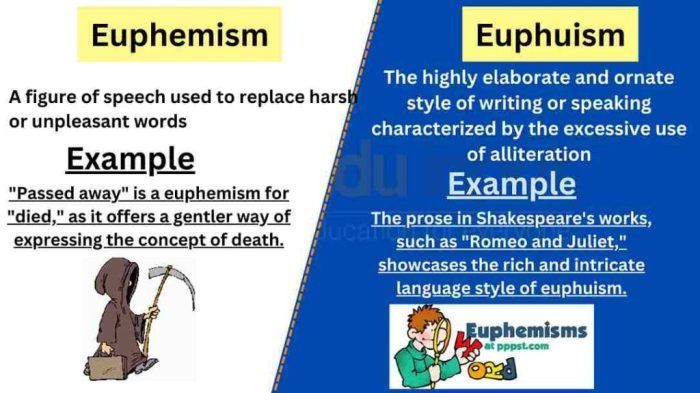Asian health massage, a rich tapestry of ancient healing practices, weaves together tradition and modern wellness. From the rhythmic strokes of Thai massage to the precise pressure points of Shiatsu, these techniques offer a unique path to restoring balance and promoting vitality.
This exploration delves into the fascinating history, principles, and benefits of Asian health massage, revealing its profound impact on both physical and mental well-being.
This ancient practice, rooted in the belief that energy flows through the body along specific pathways, aims to harmonize these flows to alleviate pain, reduce stress, and enhance overall health. With its focus on restoring balance, Asian health massage provides a holistic approach to wellness, incorporating elements of mindfulness, meditation, and other complementary therapies.
History and Cultural Context of Asian Massage

Asian massage encompasses a diverse range of practices rooted in ancient traditions and philosophies, each with its unique techniques and cultural significance. These practices have evolved over centuries, shaping the health and well-being of communities across Asia.
Origins and Development
Asian massage practices have a long and rich history, dating back thousands of years. The origins of these practices can be traced to ancient civilizations in India, China, and Thailand, where massage was an integral part of traditional medicine and healing practices.
- Ayurvedic Massage (India):This ancient practice, originating from the Ayurvedic system of medicine, emphasizes restoring balance and harmony within the body’s energy systems. It involves various techniques, including oil massage, herbal therapies, and acupressure, to promote physical and mental well-being.
- Tuina (China):Tuina, a form of Chinese massage, has been practiced for over 2,000 years. It is based on the principles of Traditional Chinese Medicine (TCM), which views the body as a microcosm of the universe, interconnected by energy pathways called meridians.
Tuina practitioners use a variety of techniques, such as kneading, stroking, and tapping, to stimulate these meridians and restore balance to the body’s vital energy (qi).
- Thai Massage:This practice, originating in Thailand, is believed to have been influenced by Ayurvedic and Chinese medicine. Thai massage involves a combination of stretching, acupressure, and rhythmic compression, aiming to promote flexibility, improve circulation, and restore balance to the body’s energy system.
- Shiatsu (Japan):Shiatsu, developed in Japan in the early 20th century, draws inspiration from traditional Chinese medicine and Zen Buddhism. It focuses on applying pressure to specific points along the body’s meridians, aiming to harmonize energy flow and promote health.
Cultural Significance
Asian massage practices are deeply embedded in the cultural fabric of their respective regions, playing a significant role in health, wellness, and social interactions.
- Social Rituals:Massage is often incorporated into traditional ceremonies and celebrations, serving as a way to express care, respect, and connection within families and communities.
- Holistic Approach:Asian massage practices emphasize a holistic approach to health, recognizing the interconnectedness of the mind, body, and spirit. They aim to address not only physical ailments but also emotional and spiritual imbalances.
- Prevention and Wellness:Beyond treating specific conditions, Asian massage practices are often employed as a preventative measure to maintain overall health and well-being.
Role in Traditional Medicine
Asian massage practices have long been integrated into traditional medicine systems, serving as a complementary or primary treatment modality for various ailments.
- Pain Management:Massage is commonly used to alleviate pain associated with muscle tension, arthritis, and other conditions.
- Stress Reduction:The calming and relaxing effects of massage are highly valued in promoting stress reduction and emotional well-being.
- Improved Circulation:Massage techniques can help stimulate blood flow and lymphatic drainage, improving circulation and reducing inflammation.
- Enhanced Flexibility:Stretching and manipulation techniques used in Asian massage can improve range of motion and flexibility.
Techniques and Principles of Asian Health Massage

Asian health massage, also known as Traditional Chinese Medicine (TCM) massage, is rooted in ancient Chinese philosophies and practices that emphasize the interconnectedness of the body, mind, and spirit. It focuses on restoring balance and harmony within the body’s energy system, known as Qi (pronounced “chee”).
Asian health massage is a popular choice for those seeking deep relaxation and pain relief. It often incorporates techniques like acupressure and stretching, promoting overall well-being. If you’re also looking for beauty treatments, you can check out beauty salon round rock for a complete pampering experience.
Many beauty salons offer massage services alongside their other treatments, so you can combine both for a truly rejuvenating experience.
This energy flow is believed to be vital for maintaining overall health and well-being.
Principles of Asian Health Massage
Asian health massage techniques are based on the fundamental principle of Qi, a vital life force that flows through the body along specific pathways called meridians. When Qi flows freely, the body is healthy and balanced. However, imbalances in Qi flow can lead to various health issues.
Asian health massage is a holistic practice that emphasizes the flow of energy within the body. It’s often incorporated into wellness routines, particularly at places like atrius health chelmsford , where a focus on holistic health is prevalent. Whether you’re seeking relaxation or relief from aches and pains, exploring the benefits of Asian health massage can be a rewarding journey towards well-being.
Asian health massage aims to restore Qi flow by applying various techniques that stimulate specific acupoints and meridian lines, promoting relaxation, reducing stress, and improving overall well-being.
Types of Massage Strokes
Asian health massage employs a variety of strokes, each designed to achieve specific therapeutic effects. These strokes are applied with varying pressure and rhythm, considering the individual’s needs and the targeted area.
- Effleurage:Long, gliding strokes that promote relaxation and lymphatic drainage. They are often used to warm up the muscles and prepare the body for deeper work.
- Petrissage:Kneading and lifting strokes that improve blood circulation and release muscle tension. They are particularly effective for addressing areas of stiffness and soreness.
- Tapotement:Percussive strokes, such as tapping, hacking, and cupping, that stimulate muscles and nerves, improving circulation and promoting energy flow.
- Friction:Circular or cross-fiber strokes that break down adhesions and scar tissue, promoting tissue regeneration and flexibility.
Acupressure Points and Meridian Lines
Acupressure is a key component of Asian health massage. It involves applying pressure to specific points on the body, known as acupoints, which are located along meridian lines. These points are believed to correspond to specific organs and functions, and stimulating them can help regulate Qi flow, alleviate pain, and improve overall health.
- Acupoints:Each acupoint is associated with a specific organ or function, and applying pressure to these points can help balance Qi flow and address various health concerns.
- Meridian Lines:There are 12 main meridians in the body, each connected to a specific organ system. Massage techniques along these lines can help harmonize Qi flow and promote overall well-being.
Benefits of Asian Health Massage

Asian health massage, encompassing various techniques and philosophies, offers a holistic approach to well-being, addressing not only physical ailments but also mental and emotional imbalances. This ancient practice aims to restore harmony within the body’s energy systems, promoting overall health and vitality.
Pain Relief, Asian health massage
Asian massage techniques, often incorporating acupressure, stretching, and deep tissue manipulation, can effectively address pain associated with various conditions.
- Back Pain:Studies have shown that Asian massage can provide significant pain relief for chronic lower back pain. A study published in the Journal of Alternative and Complementary Medicine found that participants who received Asian massage therapy experienced a significant reduction in pain intensity and improved functional ability.
- Headaches:Asian massage techniques targeting specific acupressure points on the head and neck can alleviate tension headaches and migraines. The massage helps to release muscle tension, improve blood circulation, and reduce stress, all of which contribute to headache relief.
- Muscle Soreness:Asian massage can help to reduce muscle soreness and stiffness, particularly after strenuous exercise.
The massage helps to improve blood flow to the muscles, promote relaxation, and reduce inflammation.
Stress Reduction
Asian massage is renowned for its ability to induce deep relaxation and reduce stress.
Asian health massage techniques often incorporate traditional practices and philosophies, focusing on the flow of energy and restoring balance within the body. For those seeking a holistic approach to wellness in Augusta, augusta health for woman offers a range of services, including massage therapy.
Whether you’re looking for relaxation or targeted pain relief, Asian health massage can provide a personalized experience to address your specific needs.
- Anxiety:Studies have shown that Asian massage can effectively reduce anxiety levels. Massage therapy triggers the release of endorphins, which have mood-boosting effects, and helps to reduce the production of cortisol, the stress hormone.
- Depression:While further research is needed, some studies suggest that Asian massage may be beneficial in managing mild to moderate depression.
Massage therapy can help to reduce feelings of stress and anxiety, improve sleep quality, and promote overall well-being.
- Insomnia:Asian massage can improve sleep quality by promoting relaxation and reducing stress. Techniques like gentle stretching and acupressure can help to calm the nervous system and prepare the body for sleep.
Improved Circulation
Asian massage techniques often involve gentle but firm strokes that help to stimulate blood flow throughout the body.
- Cardiovascular Health:Improved circulation can have positive effects on cardiovascular health. Massage therapy helps to lower blood pressure, reduce heart rate, and improve blood flow to the heart and other organs.
- Lymphatic Drainage:Asian massage can also stimulate lymphatic drainage, which is essential for removing waste products and toxins from the body.
Enhanced Flexibility
Asian massage techniques often incorporate stretching and joint mobilization, which can improve flexibility and range of motion.
- Joint Pain:Improved flexibility can help to alleviate pain associated with arthritis and other joint conditions.
- Sports Performance:Enhanced flexibility can also improve athletic performance by allowing athletes to move more freely and efficiently.
Other Benefits
- Improved Immune Function:Asian massage can help to boost the immune system by stimulating blood circulation and promoting relaxation.
- Increased Energy Levels:Asian massage can help to increase energy levels by reducing stress and promoting better sleep.
- Emotional Well-being:Asian massage can promote emotional well-being by reducing stress, anxiety, and depression.
Asian Health Massage and Wellness

Asian health massage goes beyond simply relieving muscle tension; it fosters a holistic approach to well-being, encompassing physical, mental, and spiritual aspects. It recognizes the interconnectedness of these dimensions and aims to create a state of balance and harmony within the individual.
The Interplay of Asian Massage and Wellness
Asian health massage practices often incorporate elements of mindfulness and meditation, creating a synergistic effect on overall well-being. Mindfulness techniques, such as focusing on the breath and present moment awareness, are often integrated into massage sessions, allowing individuals to connect with their bodies and release stress.
Meditation practices, which cultivate a state of deep relaxation and inner peace, complement the physical benefits of massage, promoting emotional and mental well-being.
Asian Massage Techniques and Wellness Benefits
The following table Artikels different Asian massage techniques and their corresponding wellness benefits:
| Asian Massage Technique | Wellness Benefits |
|---|---|
| Shiatsu | Reduces stress and anxiety, improves circulation, promotes relaxation, alleviates muscle tension, enhances energy flow |
| Thai Massage | Increases flexibility and range of motion, improves circulation, relieves muscle pain and stiffness, promotes relaxation and stress reduction, enhances energy flow |
| Tuina | Improves circulation, relieves pain and stiffness, strengthens the immune system, promotes relaxation, balances energy flow |
| Acupressure | Relieves pain, improves circulation, reduces stress, enhances energy flow, promotes relaxation |
| Ayurvedic Massage | Promotes relaxation and stress reduction, improves circulation, balances the doshas (body energies), enhances overall well-being |
Finding a Qualified Asian Massage Therapist

Finding a qualified and experienced Asian massage therapist is crucial for receiving safe, effective, and beneficial treatments. It’s important to approach this process with care and diligence, ensuring you choose a practitioner who understands the unique principles and techniques of Asian massage.
Verifying Credentials and Training
Verifying the credentials and training of a potential therapist is a crucial step in ensuring their expertise. This involves looking for evidence of formal education, certifications, and ongoing professional development in Asian massage techniques.
- Formal Education:Look for therapists who have completed a recognized training program in Asian massage. This might involve a diploma, certificate, or degree from a reputable institution specializing in Asian massage therapies. The program should cover a comprehensive curriculum encompassing the history, theory, techniques, and principles of Asian massage.
- Certifications:Professional certifications from recognized organizations demonstrate a therapist’s commitment to upholding high standards of practice and knowledge. Some examples include the National Certification Board for Therapeutic Massage & Bodywork (NCBTMB) in the United States, or similar organizations in other countries.
- Continuing Education:Asian massage is an evolving field, with new research and techniques emerging regularly. Therapists who are committed to staying up-to-date will actively engage in continuing education courses, workshops, and seminars to enhance their skills and knowledge.
Finding a Reputable Practice
Finding a reputable massage practice or clinic specializing in Asian health massage is essential for a positive and safe experience. This involves researching and evaluating different options to identify a practice that aligns with your needs and preferences.
- Online Reviews and Testimonials:Online platforms like Google Maps, Yelp, or Healthgrades often provide valuable insights from previous clients. Reading reviews and testimonials can give you a sense of the practice’s reputation, client satisfaction, and the therapist’s approach.
- Professional Associations:Professional associations dedicated to Asian massage can be excellent resources for finding qualified practitioners. These associations typically maintain a directory of members, often with information about their credentials, specializations, and locations.
- Word-of-Mouth Recommendations:Asking friends, family, or colleagues who have experience with Asian massage for recommendations can be a helpful way to find reputable practitioners. Personal referrals often provide valuable insights and firsthand experiences.
Safety Considerations and Contraindications

While Asian health massage offers numerous benefits, it’s crucial to be aware of potential risks and contraindications to ensure a safe and positive experience. Certain medical conditions, recent injuries, or specific life stages may require adjustments or even preclude the use of Asian health massage.
Open communication with your massage therapist is vital to identify any potential risks and customize your treatment accordingly.
Communicating Health Concerns
Before receiving any massage therapy, it’s essential to inform your therapist about your complete medical history, including any ongoing health conditions, recent surgeries, medications you’re taking, and any allergies.
Being transparent with your therapist allows them to tailor the massage techniques and pressure to your specific needs and limitations. They can also advise you on whether Asian health massage is appropriate for your current health status.
Contraindications for Asian Health Massage
There are certain conditions that may make Asian health massage inadvisable or require modifications. These include:
- Pregnancy:While some massage techniques can be beneficial during pregnancy, others may be contraindicated. It’s crucial to consult with both your doctor and massage therapist to determine safe and effective massage options.
- Blood Clots:Massage can dislodge blood clots, increasing the risk of a pulmonary embolism. If you have a history of blood clots or are at risk, inform your therapist.
- Cancer:Certain massage techniques may be contraindicated for individuals with cancer, especially those undergoing chemotherapy or radiation therapy. Discuss with your doctor and massage therapist to determine the safest approach.
- Open Wounds or Infections:Massage should be avoided on areas with open wounds or infections to prevent further irritation or spreading the infection.
- Severe Osteoporosis:In cases of severe osteoporosis, deep tissue massage may pose a risk of bone fractures. Consult with your doctor and therapist for guidance.
- Recent Surgery:If you’ve recently undergone surgery, it’s crucial to consult with your surgeon and massage therapist before receiving any massage therapy. The therapist will need to be aware of the surgical site and any restrictions.
Decision-Making Process for Asian Health Massage
To ensure a safe and effective massage experience, follow this decision-making process:
1. Assess your current health status: Consider any medical conditions, recent injuries, or medications you’re taking.
2. Communicate with your doctor: Discuss your intention to receive Asian health massage and seek their advice based on your specific health situation.
3. Choose a qualified massage therapist: Look for a therapist with experience in Asian health massage and who is licensed and insured.
4. Consult with the massage therapist: Inform them about your medical history, concerns, and any specific areas you wish to target.
5. Start with a gentle session: Begin with a shorter, less intense massage to assess your body’s response.
6. Listen to your body: If you experience any discomfort or pain, communicate with your therapist immediately.
By following these steps, you can ensure a safe and enjoyable Asian health massage experience.
Closing Notes

Asian health massage stands as a testament to the enduring wisdom of ancient healing traditions. Its ability to address a wide range of health concerns, from physical pain to emotional stress, underscores its value in modern wellness practices. By embracing the principles of energy flow, mindful touch, and holistic well-being, Asian health massage offers a unique path to restoring balance and achieving a greater sense of vitality.
Essential Questionnaire
Is Asian health massage suitable for everyone?
While Asian health massage is generally safe, certain conditions, such as pregnancy, recent injuries, or specific medical conditions, may require adjustments or contraindications. It’s crucial to consult with a qualified therapist and discuss your health history before receiving any massage therapy.
How often should I receive Asian health massage?
The frequency of massage sessions varies depending on individual needs and goals. Some individuals may benefit from weekly sessions, while others may find monthly treatments sufficient. Your therapist can help determine the optimal frequency based on your specific situation.
What should I wear for an Asian health massage session?
Wear comfortable, loose-fitting clothing that allows for easy movement. You may be asked to remove some clothing, such as shoes and socks, to facilitate the massage. Your therapist will provide a private and comfortable environment for the session.